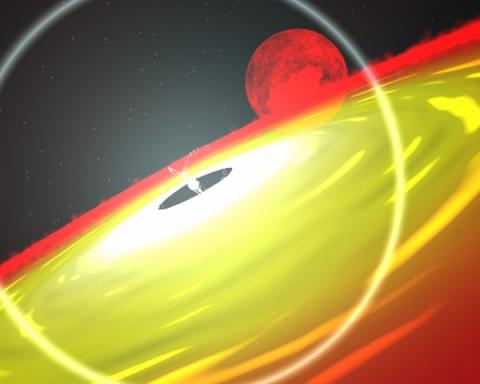X Ray Pulsar

Credit & Copyright: W. Feimer (Allied Signal),
GSFC,
NASA
Explanation:
This dramatic artist's vision shows a
city-sized
neutron star
centered in a disk of hot plasma drawn from
its enfeebled red companion star.
Ravenously
accreting material from the disk,
the neutron star spins faster and faster
emitting powerful particle beams and pulses
of X-rays as it rotates 400 times a second.
Could such a bizarre and inhospitable star system really exist in
our Universe?
Based on data from the orbiting
Rossi X-Ray Timing Explorer (RXTE)
satellite, research teams have
recently announced a discovery which fits
this exotic scenario well - a "millisecond" X-ray pulsar.
The newly detected
celestial X-ray beacon
has the unassuming catalog
designation of SAX J1808.4-3658 and is located a comforting
12,000 light years away in the
constellation Sagittarius.
Its X-ray pulses offer evidence of rapid,
accretion powered rotation
and provide a much sought after
connection between
known types of radio and X-ray
pulsars and the
evolution
and ultimate demise of
binary star systems.
Authors & editors:
Robert Nemiroff
(MTU) &
Jerry Bonnell
(USRA)
NASA Web Site Statements, Warnings,
and Disclaimers
NASA Official: Jay Norris.
Specific
rights apply.
A service of:
LHEA at
NASA /
GSFC
& Michigan Tech. U.

